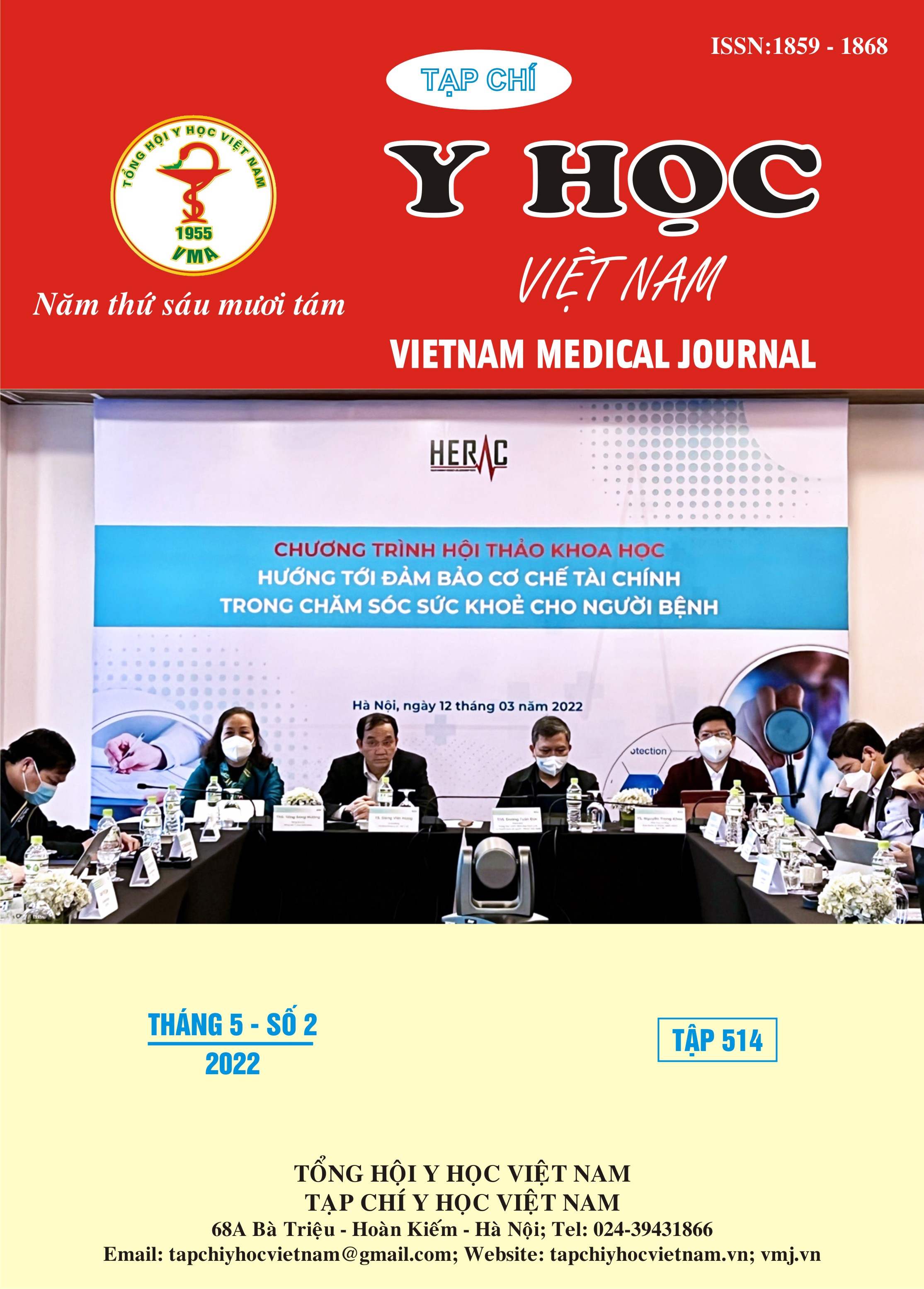EVALUATION OF PEDICLE SCREW ACCURACY IN LUMBAR SPONDYLOLISTHESIS BY O-ARM ASSISTED TLIF METHOD
Main Article Content
Abstract
Objectives:To evaluate the accuracy of the transpedestal screw-in lumbar spondylolisthesis using the O-arm assisted PLIF/TLIF method. Methods: This is a cross-sectional study conducted on 47 patients diagnosed with lumbar spondylolisthesis, surgically treated during the study period (1/2018-1/2019) at the Department of Orthopedic Trauma and Trauma Spine - Bach Mai Hospital. Results: In 47 study subjects, more than half of the patients (53.19%) suffered a leg pain threshold of more than 5 points. The total number of screws to be captured is 204 screws. There are 40 patients with 1-stage lumbar spondylolisthesis corresponding to 160 screws and 6 patients with 2-stage lumbar spondylolisthesis corresponding to 36 screws. In addition, there is a 3-stage surgical object corresponding to the number of screws and 8 screws. According to the assessment of the accuracy of screws that have been captured in surgery according to the standards of Gertzbeinn - Robbins, we have the precision of group A is 95.05%, group B is 4.95%. Each level of sliding is placed with 1 artificial graft, and there are 55 synthetic grafts placed in 47 patients. 90.9 % of the pieces met the excellent standard, and 9.1% of the samples had a good position. Conclusion: The control study has shown that using the PLIF/TLIF method with O-arm supports the high accuracy of squeezed screws.
Article Details
Keywords
screw, precision, PLIF/TLIF surgery, spondylolisthesis
References
2. Võ Văn Thanh (2014), Kết quả điều trị trượt đốt sống thắt lưng L4-L5 bằng phẫu thuật lấy đĩa đệm, cố định cột sống, ghép xương liên thân đốt, Luận văn tốt nghiệp Bác sỹ nội trú, Trường Đại học y Hà Nội.
3. Parker S.L., Adogwa O., Paul A.R. và cộng sự. (2011). Utility of minimum clinically important difference in assessing pain, disability, and health state after transforaminal lumbar interbody fusion for degenerative lumbar spondylolisthesis. J Neurosurg Spine, 14(5), 598–604.
4. El-Soufy M., El-Adawy A.M., Al-Agamy S. và cộng sự. (2015). Clinical and Radiological Outcomes of Transforaminal Lumbar Interbody Fusion in Low- Grade Spondylolisthesis. Spine & Neurosurgery, 2015.
5. Alijani B., Emamhadi M., Behzadnia H. và cộng sự. (2015). Posterior lumbar interbody fusion and posterolateral fusion: Analogous procedures in decreasing the index of disability in patients with spondylolisthesis. Asian J Neurosurg, 10(1), 51.
6. Refaat, M.I. (2014). Management of Single Level Lumbar Degenerative Spondylolisthesis: Decompression Alone or Decompression and Fusion. Egyptian Journal of Neurosurgery, 29(4), 51–56.
7. Wang Y., Chen K., Chen H. và cộng sự. (2019). Comparison between free-hand and O-arm-based navigated posterior lumbar interbody fusion in elderly cohorts with three-level lumbar degenerative disease. Int Orthop, 43(2), 351–357.
8. Faundez A.A., Mehbod A.A., Wu C. và cộng sự. (2008). Position of interbody spacer in transforaminal lumbar interbody fusion: effect on 3-dimensional stability and sagittal lumbar contour. J Spinal Disord Tech, 21(3), 175–180.


